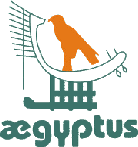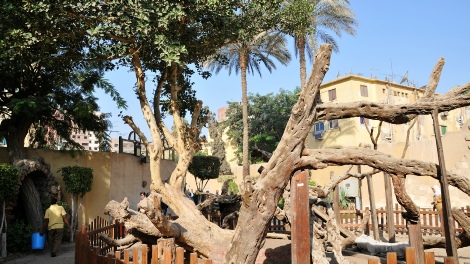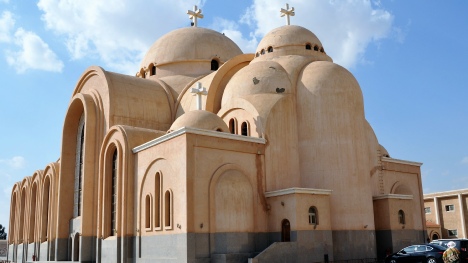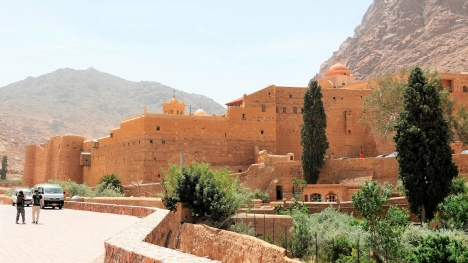

Your partner for Egypt and Nubia
Visit Egypt, the cradle of early Christianity and monasticism! Places you have read about in the Bible spring to life - do not miss the opportunity to follow in the footsteps of saints and prophets.
In the footsteps of the Holy Family in Egypt, the land of their safe refuge
“Arise, and take the young child and his mother, and flee into Egypt!” St.Matth. 2.13
Egypt has long been known to have been the refuge of the Holy Family. Besides, it was the first country ever to be Christianized. Egyptian Christians, the Copts, believe that St. Mark himself taught the Gospel in Alexandria. Scientists acknowledge that a disciple of the apostle Paul spread the new faith among the Greek, Jewish and Egyptian communities in Egypt. Early Christian texts found in Egypt date back to the late second century B.C. During the third century Roman laws – which Christians felt to be oppressive – drove the first believers into the desert and gave rise to monasticism. St.Antony (251-356) was the first anchorite, and barely a century later Pachom of Tabennese (ca.292 – 346) gathered the eremites into monastic communities which were later formed and ruled by his most famous successor, Shenouda of Athripe (d.451). Until today Egyptian Christians believe in the unity of the divine and human nature of Christ and are one of several monophysite churches in the Middle East. Even centuries after the advent of Islam there are approximately 10% Christians in Egypt. Most are Copts, but there are also Catholics and even a small group of Protestants.
There are a lot of sites to visit for those interested in this part of Egypt’s history; first, there are the stations of the route the Holy Family took, which are revered until today. And there are lots of churches and monasteries dating back to the 5th – 7th century, many of which are still in use today.
|
EG 4b: On the trail of the Holy Family & Encounter with the Coptic Church II 8 days journey The Evangelist Matthew reports that an angel told Joseph in a dream to flee with Mary and Jesus from Bethlehem to Egypt before King Herod, who wanted to kill the child. Only after the king's death did the family return and settle in the city of Nazareth (Mt 2:13-23). The pilgrimage route includes the places where Mary, Joseph, and Jesus are said to have stayed during their exile in Egypt.
Day 1: Europe - Cairo Arrival at Cairo airport, transfer to hotel and overnight.
Day 2: Cairo: Pyramids and Egyptian Museum Breakfast at the hotel - departure by bus with our German speaking guide who will accompany us during the whole trip - visit of the pyramids of Giza (The Pyramid of Khufu - one of the seven wonders of the ancient world, the pyramids of Khafre and Menkaure, two pharaohs of the ancient empire). After that we admire the Sphinx. With her lion body and human head, she is the embodiment of royal power and the protector of the gate of the temples. Visit of the new national museum that is expected to open its doors at the end of this year - worship and meeting in a Coptic church - return to the hotel for dinner. Overnight stay in Cairo. (BD)
Day 3: Wadi Al Natrun - Old Cairo - Bazaar Breakfast - Departure by bus to Wadi Al Natrun, where natron is mined, used for the mummification process since the time of the Pharaohs. The Holy Family is said to have found refuge in this valley; later, Makarios the Great retreated there in 330. After that, many believers who were persecuted by the Byzantines found refuge there. We visit two of the three monasteries still standing: Deir El-Suryani (The Syrian Monastery) and Deir Abu Makar (The Makarios Monastery) - meeting (if possible) with Abouna Wadid, the abbot of the monastery. We then leave Wadi Al Natrun and drive to Old Cairo. We will visit the Coptic quarter of Old Cairo: the heart of the Egyptian Christian community. It is the oldest quarter of the city still standing - worship in a Coptic Catholic church - visit the hanging church (named after its location above a gatehouse of the Roman fortifications). The church is dedicated to the Virgin Mary. It is one of the most beautiful ancient Christian places of worship (circa fourth century BC). Visit of the Orthodox Church of Sergius, which according to tradition was built on one of the stops of the Holy Family on their escape from Herod. We drive to the Old Town. Your tour starts in one of the oldest streets in Egypt: El Moez Le Din Allah Street. This street is a witness of the historical Cairo with various monuments spread on both sides of the street such as Bab El Fetouh and Bab El Nasr, Barqouq Mosque and Nahassen School. You will also visit Khan EL Khalili Bazaar, one of the oldest markets in Egypt. Colorful cloths, silver and goldware, carvings, clothes, spices, shoes, dried fruits, hookahs, household goods, perfume oils, there is almost nothing you can't buy here. Dinner and overnight in Cairo. (BD)
Day 4: Cairo - Bani Hasan - Gebel et Teir- El Minya After breakfast, drive to El Minya. We will visit the tombs of Bani Hasan. The murals inspired by everyday life are typical of the Middle Kingdom. We visit the tomb of Khnumhotep II, a king of the XIIe dynasty - open air service. We also visit the monastery on Gebel et Teir, one of the most important pilgrimage sites on the flight route of the Holy Family in Egypt. In July of each year, up to two million Christians and Muslims make a pilgrimage to the monastery. On August 22, the Assumption of Mary is celebrated here. The monastery was built on the rocky hilltop at the time of Helen, mother of the Roman Emperor Constantine. An earlier Roman rock temple was reused for the monastery church of the Virgin Mary in 328 AD. South of the sanctuary is a small room that is said to have served as a resting place for the Holy Family. Dinner and hotel transfer in El Minya. (BD)
Day 5: El Minya - Zaafarana- Antonion and Paulus Monastery Breakfast then departure to Zaafarana - visit of the Monastery of St. Paul, one of the most important Coptic monasteries built in the fifth century next to the grotto where St. Paul of Thebes lived for 50 years - prayer in front of the Fountain of Mary, where Myriam the sister of Moses is said to have washed her feet during the Exodus - commemoration of the crossing of the Red Sea - religious service - lunch - visit of the Monastery of St. Anthony, who is considered the ancestor of the first monks. Founded by the disciples of St. Anthony at the end of the fourth century, it is considered the oldest monastery in the world - meeting with one of the monks (if possible) - dinner and overnight stay in Zaafarana. (BD) Day 6: Zaafarana - St. Catherine Breakfast and then drive along the Red Sea coast towards the Sinai Peninsula -visit Ain Moussa, commemorating the Biblical stops of the Exodus Mara et Elim: " When they came to Mara, they could not drink the water of Mara because it was bitter. Therefore they called it Mara (bitter well).... Then they came to Elim. There were twelve springs and seventy palm trees; there by the waters they camped. " (Ex. 15 à 17) - Stop at " Hamam Al-Far'un " where, according to tradition, the Egyptian army that pursued the Hebrews was destroyed. Optional ascent of the Mount of Moses (2,285 m high - about 5 hours); there Moses received the Ten Commandments. Dinner and hotel check-in in St. Catherine. (BD)
Day 7-Catherine Monastery - Sharm el Sheikh Breakfast - Visit of the Greek Orthodox St. Catherine's Monastery; it is one of the oldest monasteries still in operation in the world; It houses the second largest collection of manuscripts after the Vatican. Drive to Sharm el Sheikh. Dinner and overnight. (BD) Day 8: Departure Drive to Sharm el Sheikh airport and departure. (B) |
|
|
|
|
|
|
|
|
|
|
|
|
|





